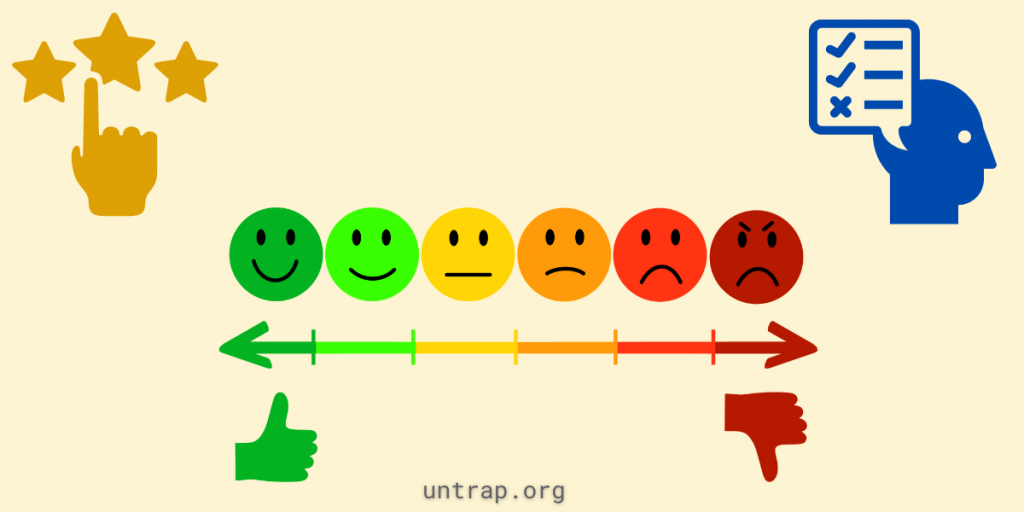
Imagine you have developed rashes on your hands and feet. So whom would you go to for a diagnosis?
- Believe stories from other people who were similarly sick
- Google it
- Consult a doctor
- Personal anecdotes
When we need to make serious decisions, how much is based on actual research and facts? Or do we go with the gut instinct that often leads us down a dangerous path? The answer might surprise you!
In this post, Learn about the cognitive bias known as Base-rate neglect and find out how to guard against it in your life. Includes real-life examples.
Understanding the Base-Rate Neglect
Base-rate neglect means people can pay too much attention to one thing instead of looking at all the facts. Instead, they might need to remember the bigger picture or what usually happens most of the time.
So coming to the rashes, you could have hypothetically developed! Before you start diagnosing yourself with a rare disease that you read about online or heard from your nosy neighbor, let’s consider the base rate of common illnesses.
Neglecting this could lead to unnecessary medical tests and treatments that can cost you an arm and a leg! ( pun intended) So, don’t be a rash decision-maker and consult with a healthcare professional before jumping to conclusions. Trust me, Dr. Google is not always right!
Base-rate neglect in event-specific information can result in biased thinking and poor decision-making if individuals fail to consider all relevant data and context.
Exploited And Exploiters
Individuals who rely solely on intuition or hunches when making decisions will likely fall prey to base-rate neglect. This cognitive bias can result in suboptimal choices that lead to financial, temporal, or reputational losses.
Predators who take advantage of this weakness tend to be informed about the underlying statistics and often use it to their advantage – for instance, in investment or negotiation scenarios.
Day-To-Day Base-Rate Neglect
Here are a few examples of base-rate neglect in everyday life:
People might avoid flying on airplanes because they have heard news stories about plane crashes, despite statistics showing that driving is more dangerous.
A student might choose a college major based on the success stories of a few graduates they know personally rather than looking at broader data on employment rates and salaries for graduates in that field.
A company might invest heavily in a new product idea based on positive feedback from a small group of customers without considering whether there is sufficient demand or market potential for the product as a whole.
A doctor might diagnose a patient with a rare disease based on their symptoms without considering how common the disease is in the population and whether other factors could be causing those symptoms.
In each of these cases, individuals focus too much on specific information or anecdotes rather than considering broader statistical data or probabilities. This can lead to biased thinking and potentially poor decision-making if all relevant factors are not considered.
Recognizing When You Are Slipping Into The Base-Rate Neglect Trap
One of the easiest ways to identify if one is falling into the trap of base-rate neglect is to take a step back and look at the situation objectively.
Ask yourself questions such as, “Am I taking all relevant information into account?”, “Are there any underlying assumptions that could be affecting my judgment?” and “What would an unbiased observer consider when weighing up this decision?” Once you start recognizing potential cognitive biases, spotting them in future situations will become easier.
Overcoming The Base-Rate Neglect
- Understand the underlying context of a situation before making decisions.
- Refrain from getting overly swayed by superficial factors or surface-level reasoning.
- Do a thorough fact-check before making an informed decision.
- Find ways to view your decision objectively and from multiple angles.
- Consider the long-term consequences of your choices and how they might affect you down the line.
- Take advice from trusted experts who have experience dealing with this type of situation in the past.
- When it comes to decision-making, rely on your own intuition, as it can often provide valuable insights that may not be available through other sources.
Final Thoughts
Sometimes, retailers offer big discounts like “up to 50% off,” which can make consumers forget about the actual worth of the product. Don’t be fooled by these discounts; they don’t always mean a good purchase.
When retailers offer discounts, we often focus on the percentage off and forget about the product’s actual value. But just because something is marked down isn’t worth buying.
To avoid wasting money, ask yourself if you really need the item and if it’s worth the discounted price compared to its original value. Think about the quality, durability, and how useful it will be to you personally. Don’t let a discount sway you.
Finally
In conclusion, base-rate neglect is a common cognitive bias, and this blog post helped you become aware of this bias and avoid making mistakes that could have negative consequences. Subscribe to our blog post to know more about such human tendencies and how they impact our decision-making processes.
Subscribe to our newsletter for more tips on avoiding base rate neglect and other cognitive biases in your everyday life.
Reference
The above article is based on the book Thinking Clearly; this article is here to help us learn and understand how our minds can be tricked by something called cognitive biases.
Similar post: False-Consensus Effect